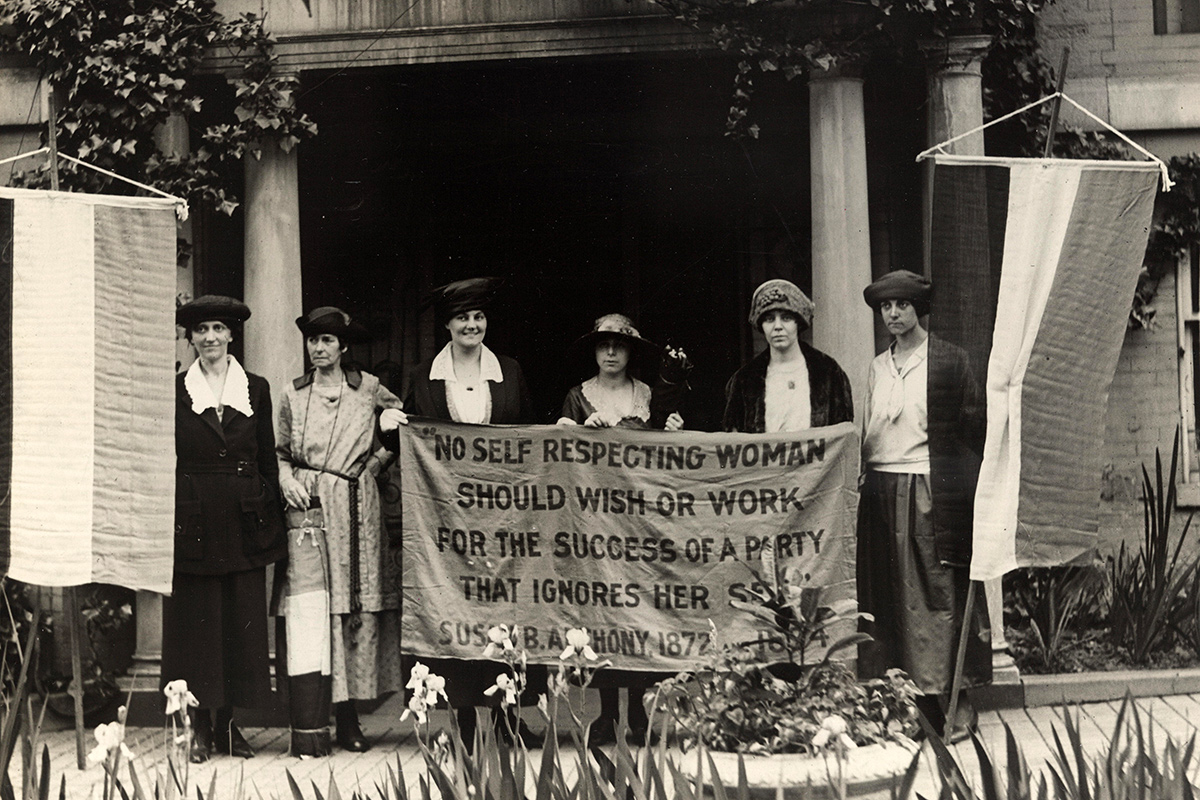Even in the midst of a Virginia summer, the sky above the Lorton workhouse manages to appear overcast. On these grounds about twenty miles southwest of Washington, D.C., long red brick buildings are evenly spaced across a green lawn cut through with walkways. Chalkboard signs point the way into various art galleries featuring painting and sculpture.
Now the Workhouse Arts Center, the facility does not stand in spite of its past, but because of it. Rather than erase the retired Virginia prison’s roots, the artists who now inhabit the complex carry themselves with an almost reverent respect for the ground’s history. In a place where every brick was made and placed by the hands of the prisoners it would soon house, it’s difficult to avoid feeling that your visit has been sculpted by the past. Some of those prisoners, such as seventy-two women’s suffragists, many of whom were force-fed as hunger strikers, would go on to set the course of the nation. They marched in Washington, D.C., demanding the vote, despite public outrage, ridicule, imprisonment, and abuse.
As it is, the Workhouse Prison Museum is small, enshrined alongside rooms that house art programs. A women’s suffrage flag hangs from the ceiling, its purple, white, and yellow stripes instantly drawing the eye toward black-and-white photographs of marchers in bell-shaped skirts.
The Lorton corrections facility has a rich and surprising history. Originally a men’s prison called the Occoquan Workhouse, it was built in 1910 in the spirit of the progressive reform movement championed by President Theodore Roosevelt, seeking to reform inmates through hard work and practice in trades. In this vein, the prisoners who inhabited it were put to work. They shaped and laid the bricks of the dormitories. They cultivated the surrounding fields. They also played baseball on a specially designed field with guard towers edging an outfield larger than Yankee Stadium’s. While incarcerated there, a young D.C. man named Chuck Brown learned about bricklaying and guitar playing, later to become the acclaimed “Godfather of Go-Go Music.” In 1954, in the midst of the Cold War, the nation’s largest Nike anti-aircraft missile battery was placed in fields planted by inmates.



But what is perhaps the most important period in its lifespan began in 1912 with the creation of the Women’s Workhouse. The women housed there were poor women of color, imprisoned for crimes such as disorderly conduct and prostitution. The women of the workhouse did laundry for the facility, while others worked in the gardens. In this way, inmates contributed to and sculpted their surroundings, a visible and felt presence ’til this day. A handcrafted space, it lends itself well to its repurposed life dedicated to art. However, prisoners at the Women’s Workhouse would grow to shape much more than the walls and lives they built within its confines.
Between January 1917 and June 1919, female protesters called the “Silent Sentinels” picketed the White House six day a week, silently demanding the right to vote. These protesters were summarily arrested, often on trumped up and menial charges, and given the choice between serving a prison sentence or paying a fine. In choosing the sentence, white suffragists of predominantly upper- and middle-class backgrounds were suddenly thrown into situations that their status and skin color would normally have protected them from. This alone might have brought some measure of publicity to their cause, but the treatment these women were to endure would ensure it.



Alice Paul, a cornerstone in the women’s suffrage movement and organizer of the Silent Sentinels, entered the Women’s Workhouse as a protester charged with “obstructing traffic.” She refused to pay the fine leveled against her, arguing that doing so would be akin to an admission of guilt. Eventually, Paul was sentenced to seven months. In response to poor conditions, rough treatment, and two weeks on bread and water, Paul started a hunger strike, a tactic she went on to repeat elsewhere. She described the guards’ response in an interview with the Philadelphia Tribune:

“When the forcible feeding was ordered I was taken from my bed, carried to another room, and forced into a chair, bound with sheets and sat upon bodily by a fat murderess, whose duty it was to keep me still. Then the prison doctor, assisted by two women attendants, placed a rubber tube up my nostrils and pumped liquid food through it into the stomach.”
She was not be the only women’s suffragist to go on a hunger strike at the Women’s Workhouse, nor the only woman to be force-fed there.
Barbaric and dehumanizing, the treatment these women endured soon became infamous. The night of November 14, 1917, called the “Night of Terror,” made national news when the prison superintendent ordered a brutal treatment of suffragists, leaving some women beaten and unconscious.
The indignities and pain suffered by the suffragists in the Women’s Workhouse built up sympathy for the cause. If women could be arrested and treated like political prisoners, they had the right to be political actors. Two weeks later, the protestors were released from prison. Three years later, on August 18, 1920, their fight came to an end when the U.S. Congress passed the Nineteenth Amendment.
The strength of character these women showed continues to make their story an impactful and necessary one to tell. As modern women’s rights movements culminate in acts of public protest, such as the Women’s March, looking back at a history of women’s rights protests becomes paramount. The Lorton workhouse remains a cultural space not simply because of the creative artists who inhabit its studios but for the larger historical impact the facility carries at its heart.

Wilson Korges is a writer and former media intern at the Center for Folklife and Cultural Heritage. He recently graduated from Iowa State University with a bachelor’s of science in history.


